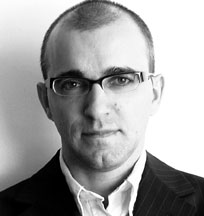« Features
Push to Flush: Political Dali. Communism, Falangism, and Francoism in Salvador Dali’s Life
If we study photographs, articles, manuscripts, books, letters and Salvador Dalí’s autobiography we can easily come to the conclusion that as of today Dalí’s political life is still greatly unknown by most art professionals due to the fact that all exhibits and retrospectives-think of Pompidou and Museo Reina Sofia or the last Spanish Pavilion in Venice-avoid this highly polemic side of one of the early pioneers in the use of mass media.
Now my thesis is that his political ideas find a firm resonance in his respective pictorial styles and artistic progress allowing fruitful connections between the two.
“-Now! Political, Dalí? I’m totally apolitical”-speaks out loud Dalí in his autobiography, even if he picked up the phone with exclamations like “Long live Franco!” or “Long live the King of Spain!”
Traditionally, most exhibitions intentionally avoid this more polemic side of the genius Dalí as it would harm his career and credibility. We can only state that this is in the 21st century a paternalist attitude that doesn’t allow for the public to comprehend not only his person but also his work with the necessary profoundness and depth.
In his early years-between 1918 and 1931, which we framed under the common header of “Communism,” Dalí shows a fervent admiration not only for the “soviets,” but also for anarchism and Catalan independence, all of which is translated in his pictorial oeuvre as a going back and forth between Realism and Cubism, but finally ending in his first surrealist works by the late 1920s. It is the period of the Manifest Groc: Published in 1929, the Yellow Manifest is profoundly revolutionary and anti-bourgeois.
It’s also in 1929 when his phase of artistic consecration takes place-think of his enigmatic painting The Great Masturbator and even more his film with Buñuel Un Chien Andalou (The Andalusian Dog). Presented in Paris and received with admiration, awe and scandal at the same time, it meant Dalí’s absolute success under the patronage of André Breton and it granted him a pivotal position in the renewal of Surrealism, which had been losing critical ground since late 1920s.

Salvador Dali private audience with Francisco Franco on November 7, 1972, El Pardo Palace, Madrid. Courtesy Agencia Efe, Spain.
FRANCO, HITLER, MUSSOLINI…
Dalí was totally determined to apply surrealism to politics and started to feel attracted by Hitler and Nazism, Mussolini, and especially by the founder of the Spanish fascist movement-Falangism-José Antonio Primo de Rivera. This was the period of paintings like the irreverent Partial Hallucination. Six Apparitions of Lenin on a Piano (1931), The Enigma of Willhelm Tell (1933) and The Enigma of Hitler (1939). It was also the period of his successfull “critical-paranoid method” and the publication of the Conquest of the Irrational (1935), which heralded his famous “double images.” This second phase manifested Dalí’s interests in all sorts of right-wing totalitarianisms embodying also the moment of his pictorial height and matureness. It also meant his open confrontation with Breton in 1934, who wanted to expel him from the surrealist movement because of his political ideas, but finally Dalí signed a declaration admitting his irresponsibility and avoided being expelled for the moment. In 1936, with the advent of the Spanish Civil War, Dalí openly took the side of Franco and the nationalists. In 1938, Dalí visited Lord Berners in Rome and was invited to attend speeches by Mussolini in person. He painted the imperialist Remembrance of Africa. It was also in 1938 when he delved productively into the Hitler myth with compositions like The Sublime Moment, Imperial Violets, Beach with Telephone and, the following year, The Enigma of Hitler.
Finally, the third big period that we can signal in Dalí’s artistic development goes hand in hand with his return to Spain, his enthusiastic adherence to Francoism and his close relationship with Franco himself. In 1948, Dalí returns to Spain and starts a classicist, Italianized, Catholic Realism that coincides with his Mystic Manifest (1951). In this period, besides visiting the Pope in 1949, he also paints many works of Christ on the cross and madonnas with a mystic-Catholic content like the iconic The Madonna from Port Lligat (1949); he pronounces in Barcelona the conference Why I was sacrilegious, and why I’m now mystic (1950); and shows his support of the Franco regime during the first Bienal Hispanoamericana in 1951 by performing Picasso and I, where he accused Picasso of being a communist and having destroyed modern art.
Dalí was twice granted a private audience with Spanish dictator Francisco Franco at the Pardo Palace on June 6, 1956, where he convinced Franco to build a future Dalí Museum in Cadaqués, which was inaugurated in 1978; and again in 1972, when he delivered a portrait of Franco’s niece María del Carmen Martínez de Bordíu Franco.
Dalí was not political or apolitical, he was meta-political: He stood beyond and instrumentalized politics keenly for his artistic success and career.
Our premise is that his political thoughts find fruitful resonance in his respective artistic styles.
Paco Barragán is the visual arts curator of Centro Cultural Matucana 100 in Santiago, Chile. He recently curated “Intimate Strangers: Politics as Celebrity, Celebrity as Politics” and “Alfredo Jaar: May 1, 2011″ (Matucana 100, 2015), “Guided Tour: Artist, Museum, Spectator” (MUSAC, Leon, Spain, 2015) and “Erwin Olaf: The Empire of Illusion” (MACRO, Rosario, Argentina, 2015). He is author of The Art to Come (Subastas Siglo XXI, 2002) and The Art Fair Age (CHARTA, 2008).




































Leave a Reply
You must be logged in to post a comment.